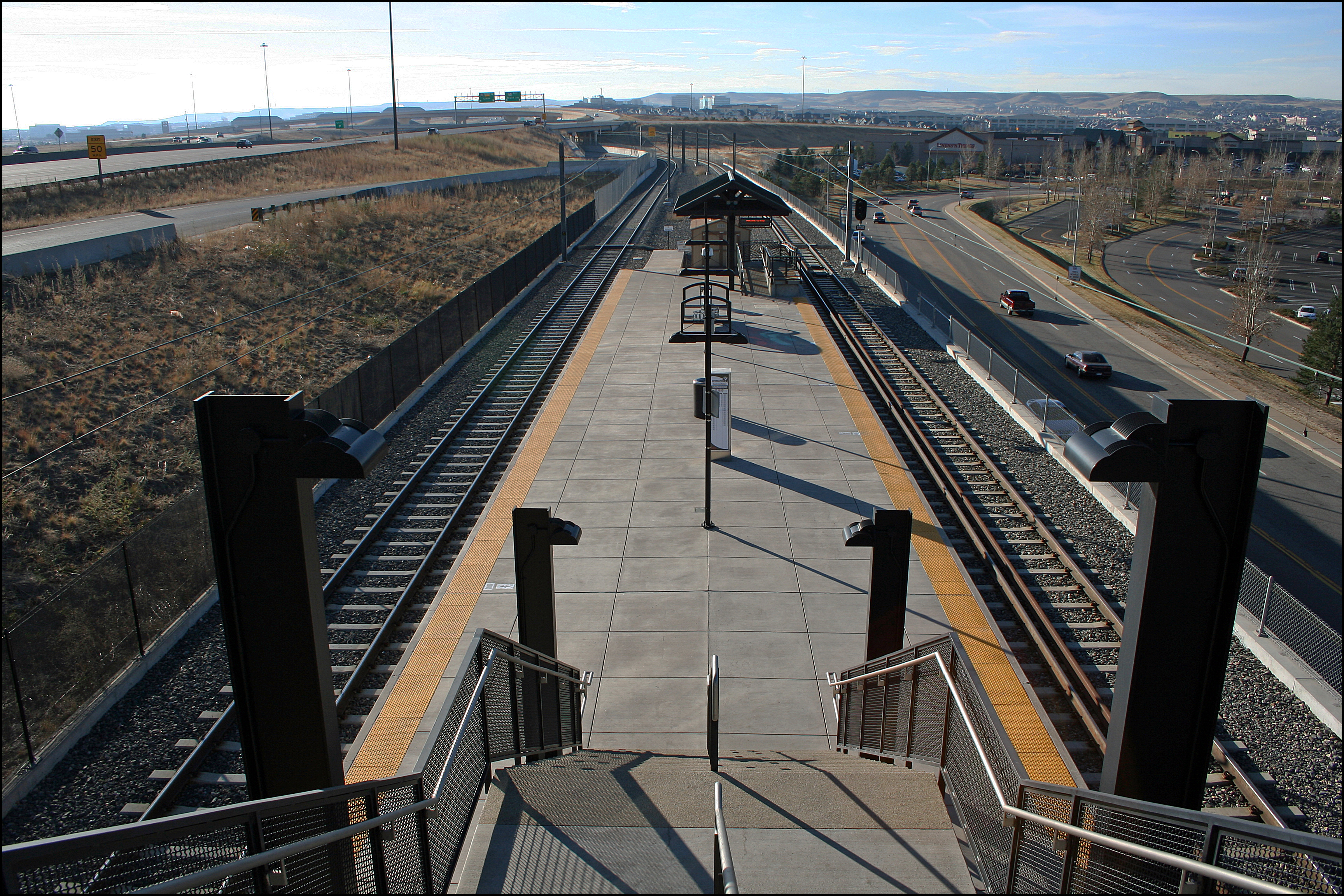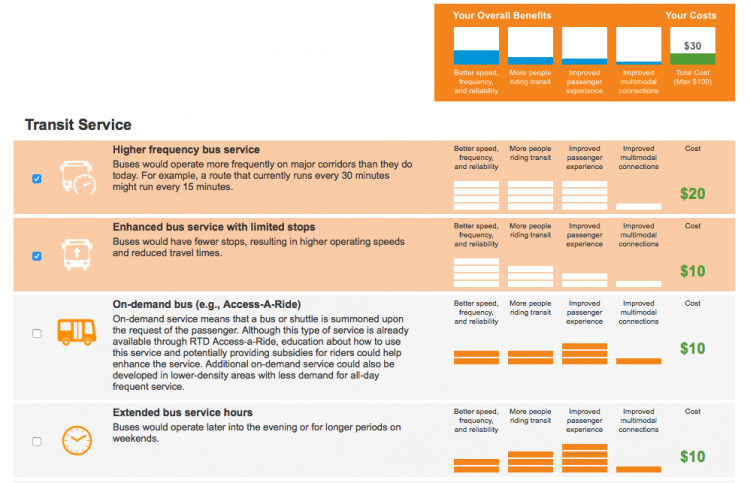
Denver, Colorado is in the midst of a significant effort called “Denver Moves: Transit,” with the goal of determining the region’s transportation needs over the next 20 years. Independently of RTD, Denver’s transit operator, Denver City and County are assessing the state of the transit system, as well as conducting robust citizen engagement to create a local transportation vision.
The team has injected some novelty to the planning process with “Build Your Own Transit System,” a digital interface that turns users into transportation planners — and budget-makers. Participants are given a fund of $100 to choose between a set of transportation enhancements. Unlike planning tools such as Streetmix, which focus on street width limitations, “Build Your Own Transit System” forces you to consider monetary tradeoffs as you plan your basket of transit improvements. The set of options features details like shelters at bus stops, which often come up as priorities in surveys of riders, but are equally often neglected in U.S. transit systems. Other choices include extending hours of transit service, or increasing frequency.

Once you’ve selected your priorities, a graph appears that demonstrates the benefits you’ve accrued for Denver transit riders. Benefits are categorized as:
- Better speed and reliability
- More people riding transit
- Improved passenger experience
- Improved multi-modal connections
In the toolkit, higher frequency bus service/ bus rapid transit are the improvements which yield the highest benefits across the board at a manageable cost. Light rail – which the RTD has been vociferously building over the past decade – mostly to the edges of its region rather than between city districts – results in similar benefits, but eats up much more of the budget.
As we outlined in our recent “Ridership Recipe”, transit riders care the most about speed, frequency and reliability. In the “Build Your Own Transit” interface, improvements that score high in this category are rider information & technology at bus stops, increasing distance between bus stops and transit signal priority. All can be achieved at a relatively low cost. Improving walking connections to transit is another economical enhancement that pays high dividends in the tool (we’ve written a thing or two on that topic).

Light rail is a stranded investment if people aren’t able to walk to it.
The tool’s design is nowhere near as sophisticated as a professional route-planning program like Remix. However, it contains elements of transit service that are missing in many planning efforts and confronts participants with real-world resource trade-offs. Other city or metro planning efforts would do very well to achieve this level of public legibility.
 On the Brink: Will WMATA’s Progress Be Erased by 2024?
On the Brink: Will WMATA’s Progress Be Erased by 2024?
The experience of being a WMATA rider has substantially improved over the last 18 months, thanks to changes the agency has made like adding off-peak service and simplifying fares. Things are about to get even better with the launch of all-door boarding later this fall, overnight bus service on some lines starting in December, and an ambitious plan to redesign the Metrobus network. But all of this could go away by July 1, 2024.
Read More A Bus Agenda for New York City Mayor Eric Adams
A Bus Agenda for New York City Mayor Eric Adams
To create the “state-of-the-art bus transit system” of his campaign platform, Mayor Adams will have to both expand the quantity and improve the quality of bus lanes. We recommend these strategies to get it done.
Read More